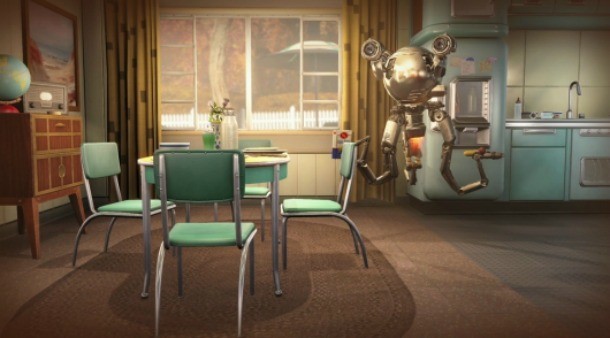Our extra-large special edition is here. Subscribe today and receive the 25% longer issue at no extra cost!
5 Things I Learned The Hard Way In Fallout 4’s Survival Mode

Fallout 4’s revamped survival mode recently went into beta on PC. The difficulty now adds a few extra systems and obstacles to Bethesda’s RPG, including sleep, hunger, and thirst cycles; extra weight on crucial items like ammo and fusion cores; and the elimination of fast travel. With the recent releases of Fallout 4’s Automatron and Wasteland Workshop (which came out today) DLC on my mind, I hopped into Survival Mode to see if it would make a second playthrough of the game more interesting. Here’s what I learned.

1. Home Is Where The Heart Is
A lack of sleep will quickly deplete your stamina in survival mode, and the only way to get a full night’s rest is to sleep in a real bed. Dirty mattresses just won’t cut it anymore. Therefore, building a functional shack for your hero is critical, as finding an unclaimed bed in the Commonwealth can be a very difficult task indeed.
However, with fast travel out of the mix, getting home in time for sundown presents a whole new set of problems. There’s no way to teleport back to the homestead, so travel and exploration play a bit differently. Before, you could feasibly pick a direction and march that way until you hit the end of the map. Now, it makes sense to use a bed or shelter as a center point while exploring the surrounding area without ever straying too far from your homestead.

2. Don’t Skip Breakfast
In addition to managing your sleep cycle, you’ll also have to keep an eye on your hunger and thirst. As a result, the best way to start your day in post-apocalyptia is with a nice hearty breakfast the moment you wake up – maybe some Sugar Bombs and a tall glass of purified water. That way, you’ll start out each morning fresh, ready to take on the wastes.
I found myself more in-tune with the day/night cycle in survival mode, as it makes more sense to get into a rhythm when there are so many systems to manage at once. At first, I tried to power through the stamina punishments, but I actually found that I enjoyed the game more when adhering to a stricter schedule. It makes the roleplaying in Fallout 4 feel more engrossing.

3. Every Shot Counts
In survival mode, everyone doles out extra damage – enemies and allies alike. Between this fact and the sparse caches of ammo spread across the Commonwealth, accuracy matters a whole lot more than it does in other difficulties. You have to be a bit smarter about your targets in VATS, and firefights require more patience and planning.
Enemies feel more menacing as well, as even the lowliest of raiders equipped with a simple pipe pistol can pose a real threat. I found myself utilizing stealth and critical hits more often than I did in previous playthroughs.

4. Companionship is Crucial
I rolled with Dogmeat during my time in survival mode, and the pooch certainly earned his keep. While you can’t dump your inventory on your companion’s back like you could in normal and hard modes, Dogmeat was able to sniff out supplies and provide some much-needed cover during firefights. Having a sidekick helped to alleviate some of the difficulties survival mode brought with it. That being said, going it alone in survival mode would probably be a unique challenge in and of itself, so especially hardcore players may be tempted to give it a shot.

5. There’s Always Money In The Mutfruit Stand
Unlike many players, I didn’t spend a lot of time with Fallout 4’s in-depth economy system during my first playthrough, nor with its settlement building. I set up a single farm to complete a quest and went on my merry way.
Survival mode doesn’t really let you play that way. Sure, you could feasibly scavenge all your food and water, but it’s much easier to build your own resource pools to dip into when the time comes. Scavenging takes time, and time is money (or in this case, caps). Survival mode forces you to work with and think about all the in-game systems and resources in a new way.
Survival Mode adds an interesting wrinkle to Fallout 4, but I’m not convinced that it’s enough to pull players back in if they’ve already buttoned up their adventure in the Boston Commonwealth. Additionally, if you’re new to Fallout 4, it may be better to start the game on a different difficulty setting, as the lack of fast travel in Survival Mode makes for some long backtracking across the map. But if you’re a veteran Fallout player already planning on returning to the game for the new DLC, Survival Mode is a good way to get reacquainted with life after the bomb.
Read our review of Fallout 4 here.

Get the Game Informer Print Edition!
Explore your favorite games in premium print format, delivered to your door.
- 10 issues per year
- Only $4.80 per issue
- Full digital magazine archive access
- Since 1991









